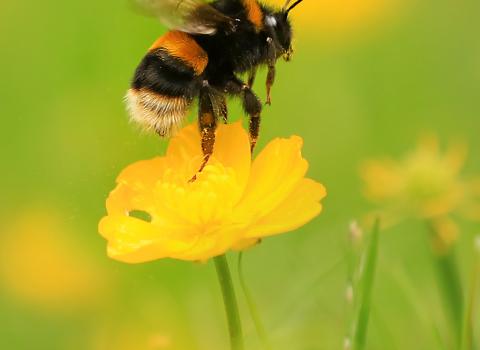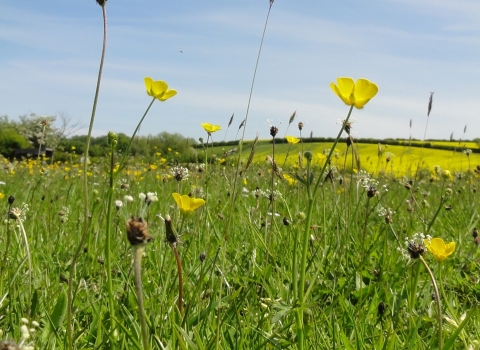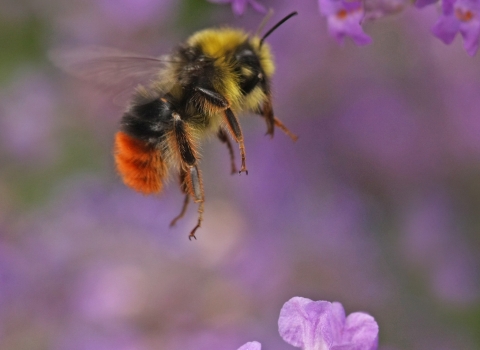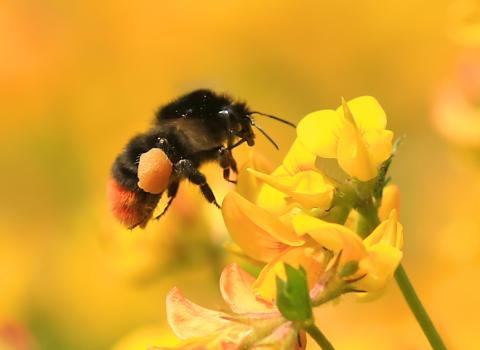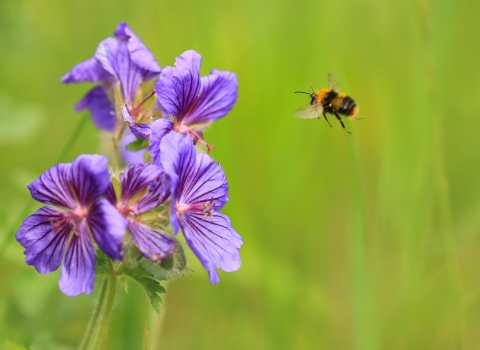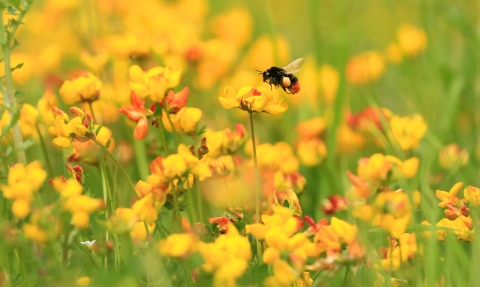
Red tailed bumblebee, Jon Hawkins, Surrey Hills Photography
Save Derbyshire's bees
Bees are in trouble
A loss of habitat including wild flower meadows and gardens has meant that 20 bee species in Britain have become extinct and more will follow if we don’t do something. Honey bees are suffering due to the Varroa mite which causes colonies to collapse and the use of pesticides which have entered the food chain are incredibly harmful to bees as they disrupt their ability to gather pollen, return to their hives and reproduce.
We want us to reverse the decline. So, we've launched our Feel the Buzz campaign.
Support Feel the Buzz now
Bees, beautiful bees
In the UK there are around 270 species of bee, of which 24 are bumblebees. Only a small number of bumblebee species are commonly found in our gardens, while many are found in specific habitats such as on moorland or coastal areas.
Let us tell you more...
They are social insects, living in colonies which can reach several hundred. They consist of fertile females, known as queens, and workers, sterile females whose role is to gather nectar and pollen to feed the grubs which are reared in wax cells in the nest. Male bumblebees and next year’s queens are produced later in the summer.
In addition to bumblebees, there are more than 200 species of solitary bee. They are generally not social insects – a female makes her nest without the help of workers.
However, nests are often found close to each other in suitable habitat. In this huge group of species, there are some that resemble small honeybees while others look like small bumblebees or wasps.
There is also one species of honeybee in the UK. They live in colonies that can number tens of thousands. The queen spends most of her life inside the hive, only venturing out for mating flights at the beginning of her adult life and later if she leaves the hive with a swarm to find a new colony.
97% of our wild flower meadows have gone since the 1930sThe Wildlife Trusts
We’ve now lost 97% of our wild flower meadows, with accompanying huge declines in butterflies and bees and animals that use meadows for food and shelter. As more of our countryside is used for food production through intensive farming, it is becoming increasingly recognised that our gardens can help to replace habitats lost from the countryside. Here's a how to guide to make your's perfect for bees...
Just imagine if everyone in Derbyshire sowed a mini meadow in a corner of every garden/yard this year, what a difference we could collectively make…

